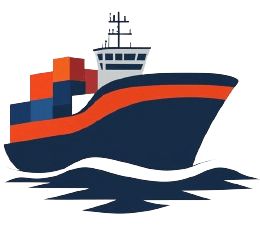Integrated Supply Chain Risk Management vs. Isolated Risk Management
| Criteria | Integrated Supply Chain Risk Management | Isolated Risk Management |
|---|---|---|
| Definition | A holistic approach to managing risks across the entire supply chain, leveraging cross-functional collaboration and integrated systems. | A segmented approach where each function or department manages its risks independently without interdepartmental coordination. |
| Scope | Encompasses end-to-end supply chain activities including procurement, production, distribution, and logistics. | Limited to specific departments or functions within the supply chain, such as procurement or logistics only. |
| Collaboration and Communication | High level of collaboration and communication across all departments and stakeholders to identify and mitigate risks collectively. | Limited collaboration; risk management activities are siloed, with minimal communication between departments. |
| Risk Identification | Proactive identification of risks through continuous monitoring and real-time data analysis across the supply chain. | Reactive identification of risks, often identified after issues have occurred within specific functions. |
| Risk Mitigation Strategies | Comprehensive risk mitigation strategies that address interdependencies and potential cascading effects within the supply chain. | Isolated risk mitigation strategies that address risks within individual departments without considering interdependencies. |
| Technology and Tools | Utilizes integrated technology platforms, such as ERP systems and advanced analytics, to provide a unified view of risks. | Uses disparate systems and tools that are specific to each department, leading to fragmented risk visibility. |
| Efficiency and Responsiveness | Enhances overall supply chain efficiency and responsiveness by enabling quick, coordinated responses to emerging risks. | Limited efficiency and slower response times due to fragmented risk management efforts and delayed information sharing. |
| Resource Allocation | Optimizes resource allocation by prioritizing risks based on their impact on the entire supply chain. | Suboptimal resource allocation, with each department prioritizing risks based on its limited perspective. |
| Resilience and Continuity | Builds supply chain resilience through integrated contingency planning and business continuity strategies. | Lower resilience, with continuity plans often limited to specific functions and lacking cross-functional coordination. |
| Stakeholder Engagement | Engages all relevant stakeholders, including suppliers and customers, in risk management processes. | Limited stakeholder engagement, primarily involving internal departmental stakeholders. |
| Data Utilization | Leverages big data and advanced analytics for comprehensive risk assessment and real-time monitoring. | Uses limited data sources and basic analytics, leading to incomplete risk assessments. |
| Implementation Complexity | Higher complexity in implementation due to the need for coordination and integration across the supply chain. | Lower complexity in implementation but at the cost of limited effectiveness and scope. |
| Adaptability to Change | Highly adaptable to changes in the supply chain environment, enabling dynamic risk management. | Less adaptable, with rigid risk management practices that may not quickly respond to changes. |
| Examples | Companies using integrated platforms like SAP or Oracle for enterprise-wide risk management. | Departments using standalone tools like spreadsheets or specialized software for their specific risk management needs. |
| Strategic Alignment | Aligns risk management with overall business strategy, enhancing strategic decision-making. | Risk management efforts are often misaligned with the broader business strategy, leading to suboptimal decisions. |
| Investment and Cost | Requires significant investment in technology and training but offers long-term cost savings through improved risk management. | Lower initial investment but may incur higher costs in the long run due to inefficiencies and unmanaged risks. |
Conclusion
Integrated Supply Chain Risk Management provides a comprehensive, collaborative, and proactive approach to managing risks across the entire supply chain, enhancing efficiency, resilience, and strategic alignment. In contrast, Isolated Risk Management focuses on individual functions, leading to fragmented and reactive risk management practices.






